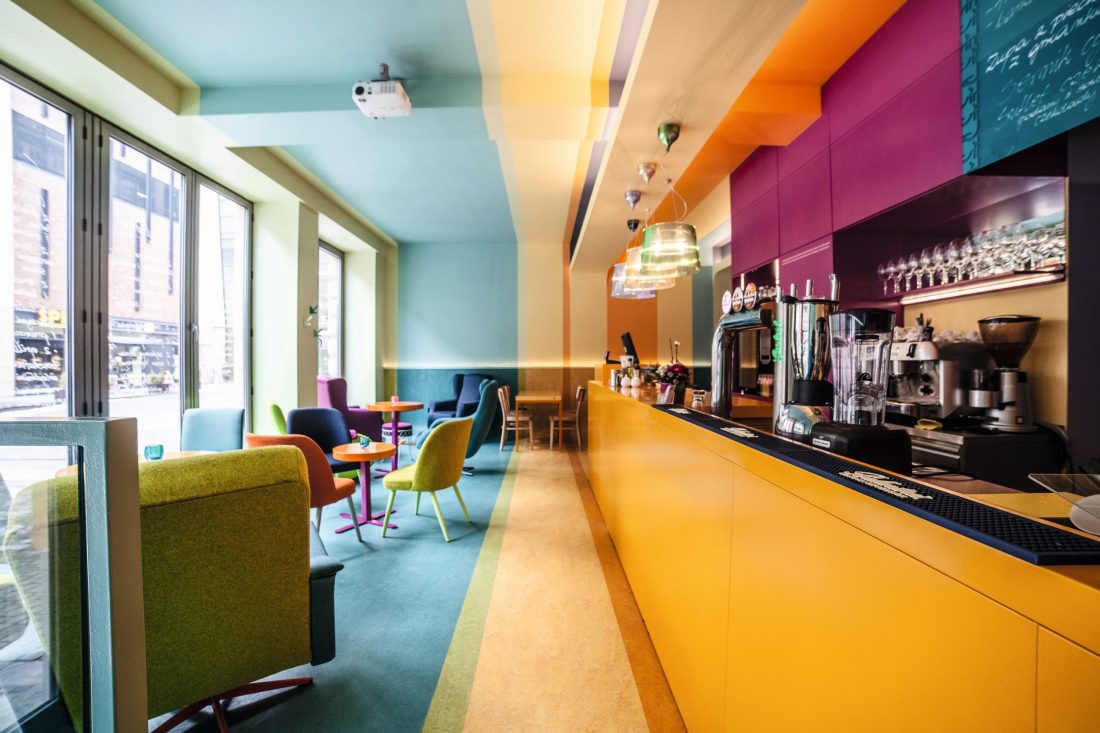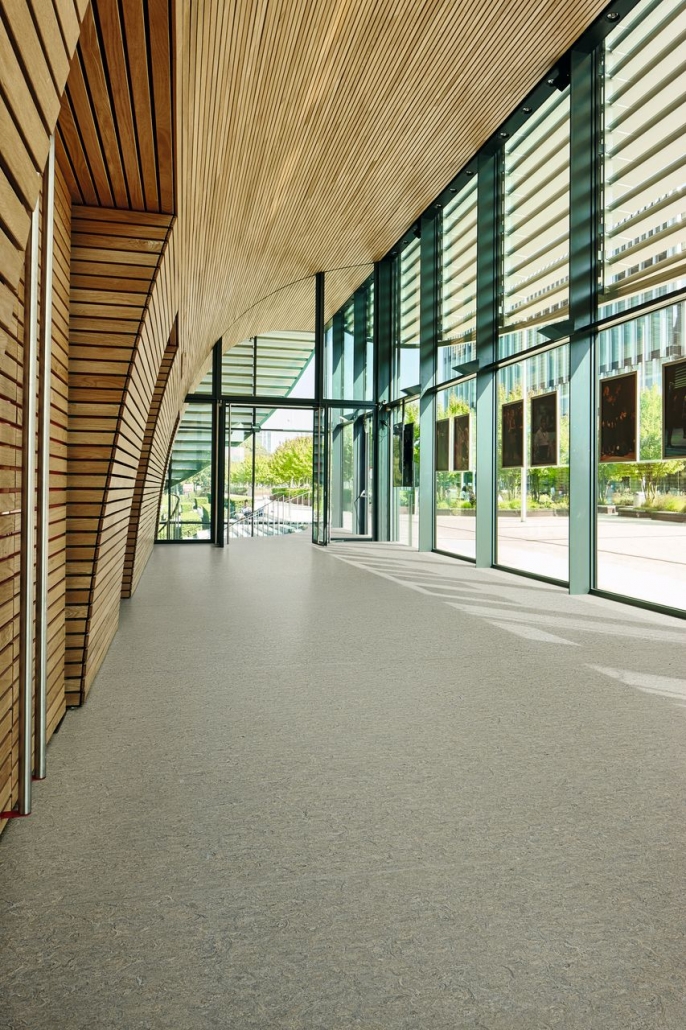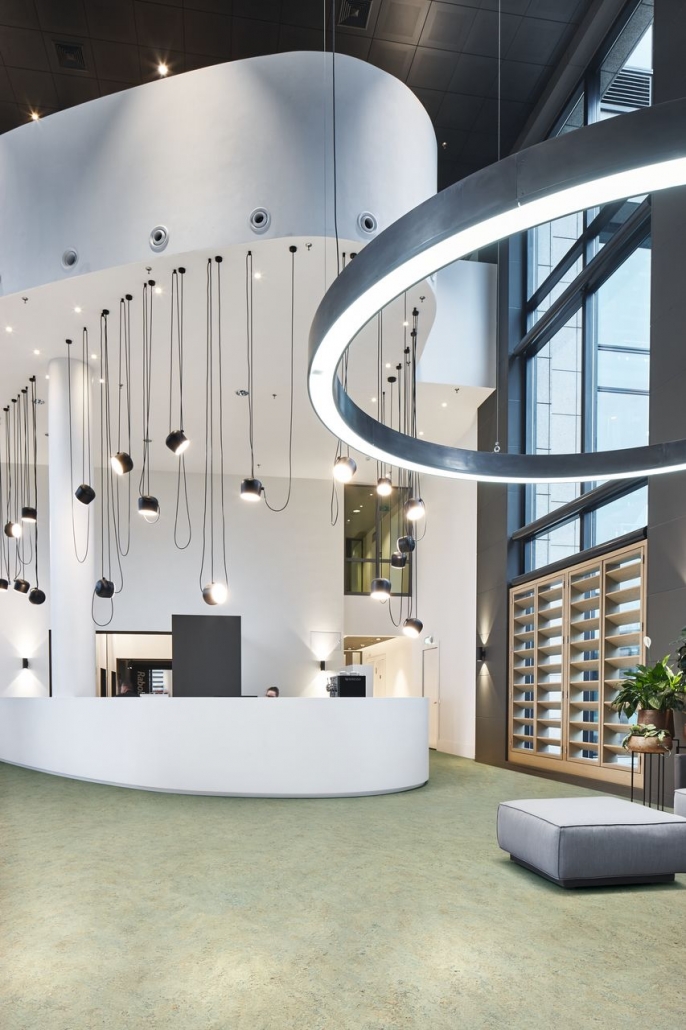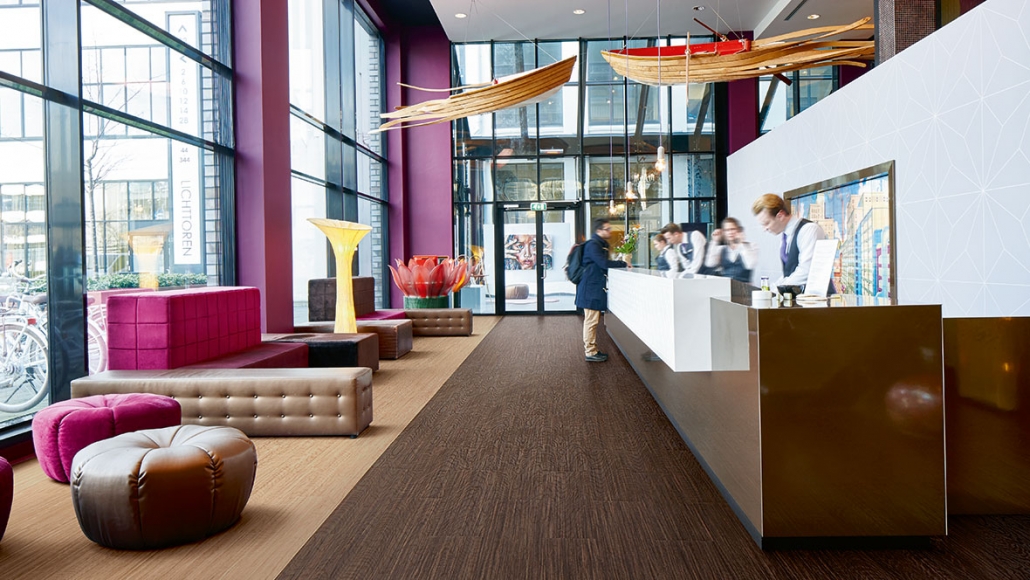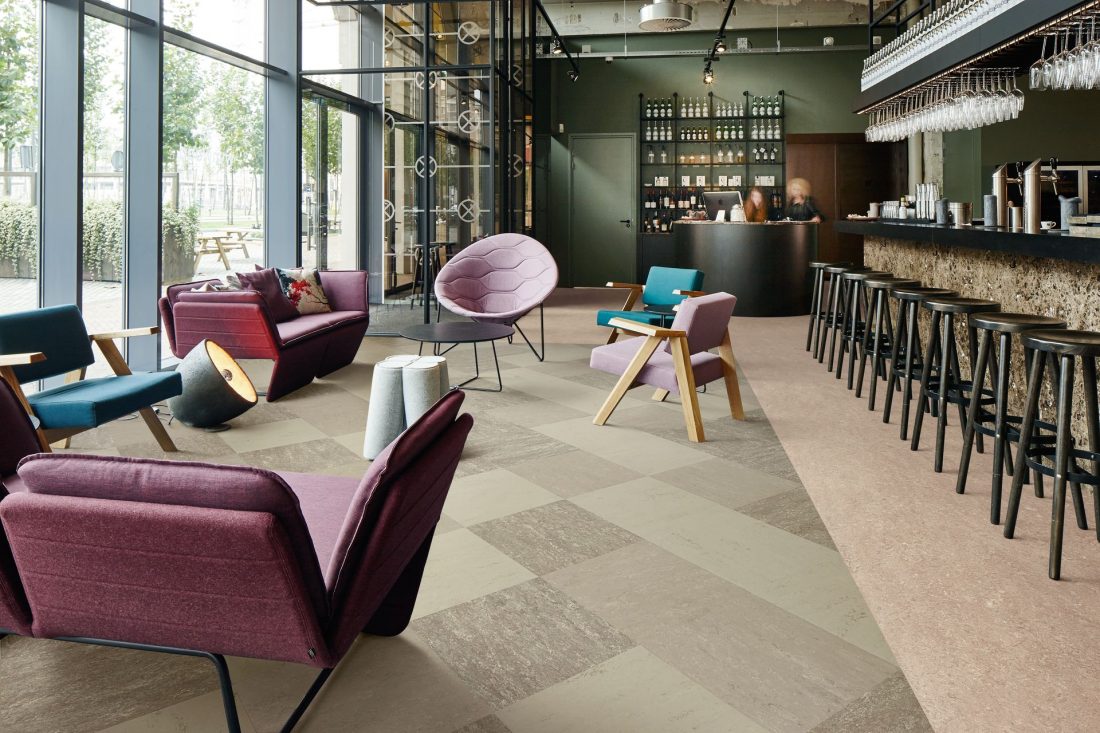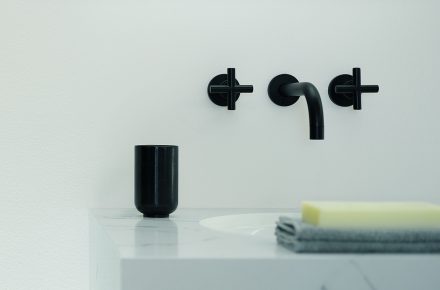Interview with Forbo Flooring | In our interview serie we ask designer and manufacturer to answer the same 6 questions about their company, their idea about design and sustainability and what is important for them.
Following the answers from Linds Arens, Marketing Communication D/A/CH at Forbo Flooring.
About Forbo Flooring
Over 100 years of experience and latest environmentally friendly production techniques guarantee the highest quality. Forbo Linoleum is the ecological alternative to all synthetic floor covers, free of PVC, plasticizers and synthetic rubber.
Linoleum is recommended as an ecological alternative for interior design, because up to 98 percent of marmoleum wallcovering (up to 98 percent) consists of natural raw materials such as linseed oil, natural resins, limestone and wood flour, and jute, of which 73 percent regrow particularly quickly. Various eco-labelling schemes such as the Blauer Engel and Natureplus prove the sustainability of this floor cover. Renewable raw materials bind the greenhouse gas carbon dioxide (CO2) during their growth through photosynthesis and are therefore an active contribution to climate protection.
In addition, the production of linoleum requires significantly less energy than the production of elastic floor covers based on plastics. Forbo’s linoleum plants use 100 percent renewable energy – currently hydropower. In addition, 35 percent recycled material and 9 percent high-quality upcycling material are incorporated into the manufacturing process, which significantly reduces the consumption of primary raw materials. Even taking into account the transport of raw materials into the factory, the atmosphere is no longer supplied with CO2 during the production process than the raw materials used compensate.
What is sustainable about your products?
Marmoleum, linoleum by Forbo Flooring, stands for sustainability, longevity, versatility and combines ecological values with contemporary design. The production process of linoleum has existed for more than a century. Essentially, craftsmanship consists of oxidation, mixing, calendering and drying. Energy consumption plays an important role in Forbo. Forbo’s linoleum plants use 100 percent renewable energy – currently hydropower. In addition, 43 percent of recycled materials and high-quality upcycling material are used in production, which significantly reduces the consumption of primary raw materials. Even counting the transport of raw materials into the factory, the atmosphere is not fed with CO2 during the production process than the raw materials used compensate. This makes Marmoleum from Forbo a CO2-neutral product, because this floor covering consists of up to 98% natural raw materials: linseed oil, natural resins, wood and limestone flour and jute. Who built linoleum, thus making a valuable contribution in the fight against global warming.
Which are the 3 most suitable adjectives to describe this and why?
Sustainable, durable and authentic.
What is the secret to your success?
Sustainability, authenticity and versatility are key factors in Linoleum’s long track record of having a proud tradition of 150 years. Invented in 1863 by Frederick Walton, the most eco-friendly resilient floor covering to date has retained its recipe. Linoleum is still produced up to 98% from natural raw materials (linseed oil, natural resins, wood and limestone flour, jute and ecologically harmless color pigments), does not require any chemical additives and is today a fixed size among the object coverings and the No. 1 from an ecological and economic point of view.
What is it you like about InteriorPark.?
Platform for selected products for a healthy indoor climate
What is good design?
Naturally design rooms with a CO2-neutral floor covering and have a variety of design options in terms of structure, texture and color. The Marmoleum color range includes various structures and textures that can be combined with each other almost limitlessly. The unique variety of colors with Forbo linoleum invites to creative floor concepts.
What are the greatest challenges for design in future?
Constant updating of designs in different structures and trendy colors.
More interviews
- Without the need for carnival barking cheap showmanship – Interview with BarkCloth
- Nature meet Functionality – Interview with Troldtekt
- The “Four-Point Guide to Good Grip” – Interview mit FSB
- Retaining honest integrity – Interview with David Trubridge
- Good design follows 5 principles – Interview with Dornbracht
- Customized floorboards emphasize architecture – Interview with pur natur

